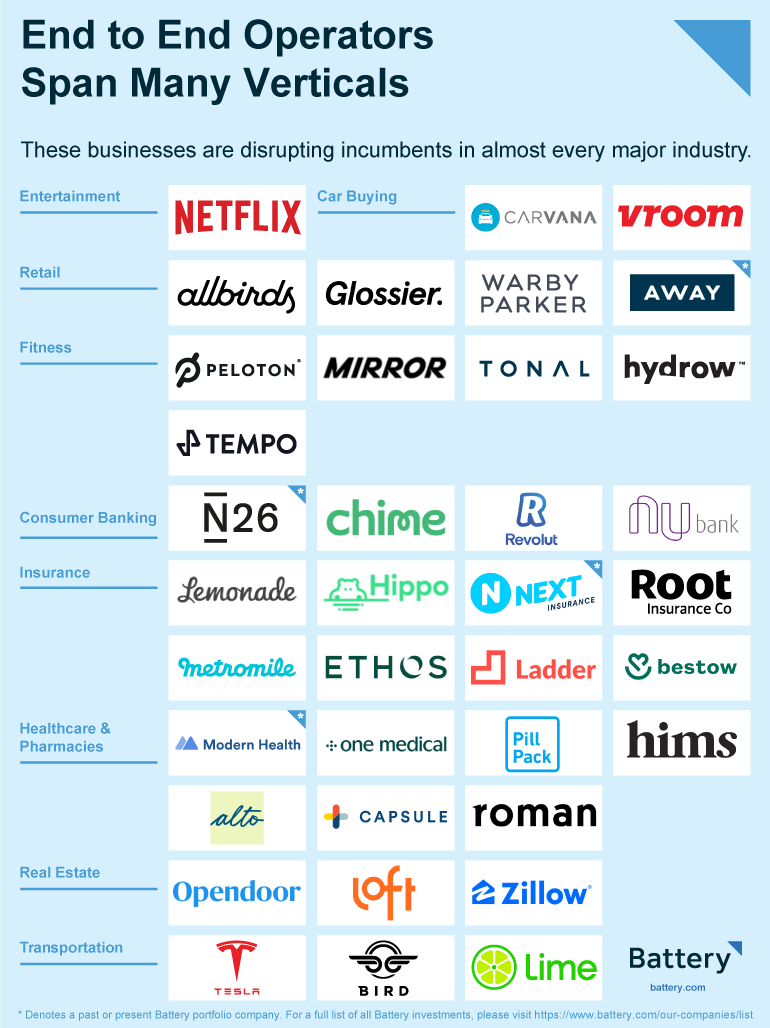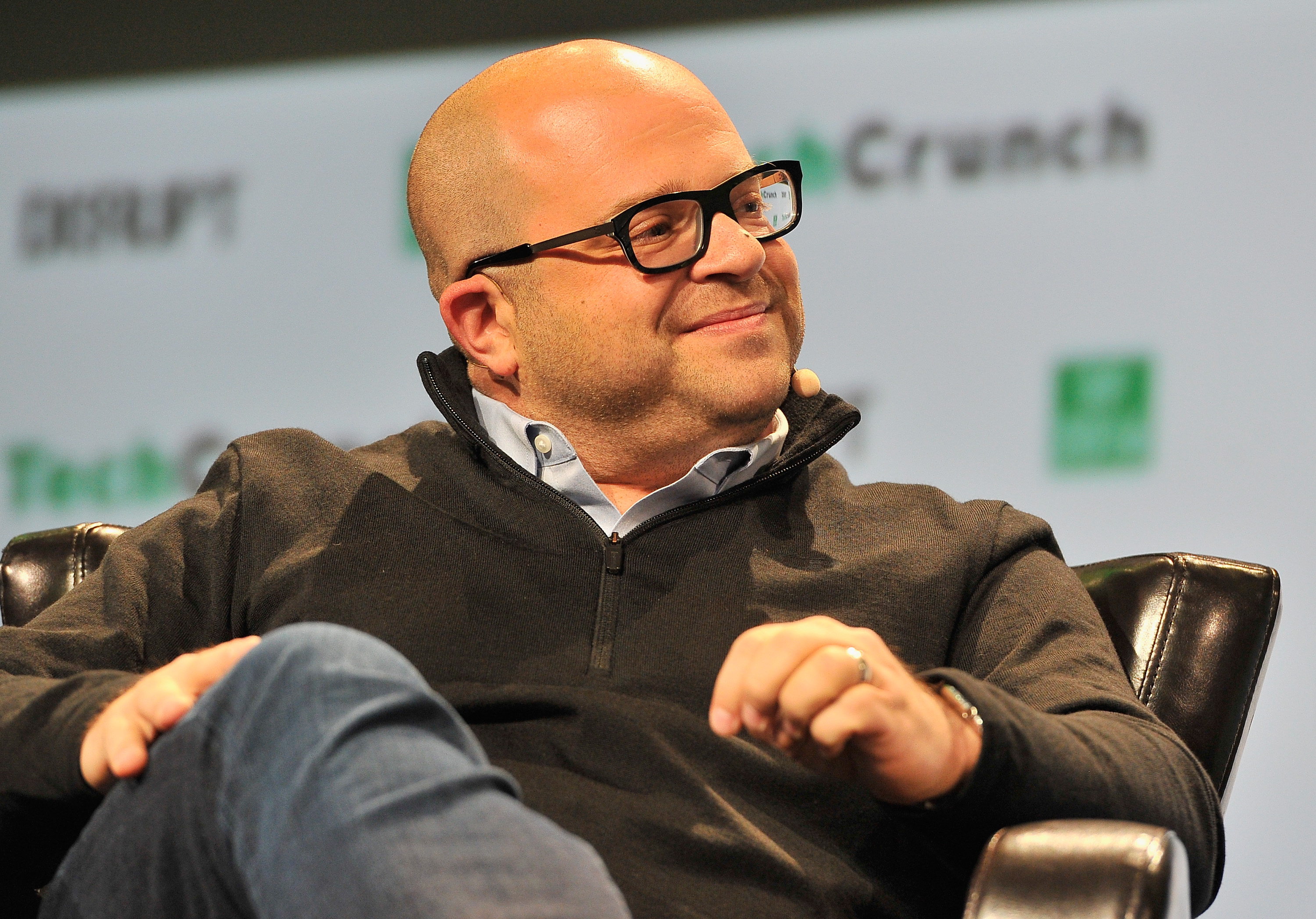TC
Auto Added by WPeMatico
Auto Added by WPeMatico
Wolt, the Helsinki-based online ordering and delivery company that initially focused on restaurants but has since expanded to other verticals, has raised $530 million in new funding. The round was led by Iconiq Growth, with participation from Tiger Global, DST, KKR, Prosus, EQT Growth and Coatue.
Previous backers 83North, Highland Europe, Goldman Sachs Growth Equity, EQT Ventures and Vintage Investment Partners also followed on. The new round takes the total amount of financing Wolt has raised to $856 million. Wolt declined to disclose the company’s latest valuation, although we know from the previous D round that the company is one of Europe’s so-called unicorns.
“We operate in an extremely competitive and well-funded industry, and this round allows us to have a long-term mindset when it comes to doubling down on our different markets,” says co-founder and CEO Miki Kuusi in a statement. “Despite the turbulence of 2020, we’ve remained focused on growth, tripling our revenue to a preliminary $330 million against a net loss of just $38 million. Compared to the $670 million in new capital that we’ve raised during this year, this puts us into a strong position for investing in our people, technology, and markets when thinking about the next few years ahead”.
Since launching with 10 restaurants in its home city in 2015, five years on Wolt has expanded to 23 countries and 120 cities, mostly in Europe but also including Japan and Israel. More recently, like others in the restaurant delivery space, Wolt has expanded beyond restaurants and takeout food into the grocery and retail sectors. This, says the company, sees it offer anything from cosmetics to pet food and pharmaceuticals on its platform.
“This was mostly a primary raise,” Kuusi tells me when I ask if the new round includes secondary funding (i.e. shareholders that exited to new investors). “We’re not looking to disclose the valuation at this time, but we’ve previously shared that the Series D round that we raised in early 2020 valued the company at above €1 billion,” he adds.
Kuusi says that the latest funding round is based on the belief that local services in the offline world will gradually be brought online by players “that can execute and maintain a great customer experience”. “We started with an exclusive focus on the restaurant, as it’s the biggest local service with an underlying high-frequency use case,” he says. “We quickly learnt that the magical product market fit for bringing the restaurant online was to offer a quick and predictable delivery experience from restaurants that didn’t use to be available for delivery. We do this by handling the complexity of the delivery on the restaurant’s behalf”.
However, this was especially difficult to do efficiently and sustainably in a small and difficult home market in the Nordics. To solve this, Wolt needed to build an “optimization-heavy logistics setup for last-mile delivery” that Kuusi says lets the service operate even in “very small cities with low income disparity, limited population density and high labor costs”.
“This means that we can operate efficiently even with relatively low order volumes, enabling us to grow and expand rapidly with much less financing than some of the other players in the market. We simply had no other choice than to do it this way as we came from such a difficult home market”.
On this foundation, Wolt is expanding into other ordering and local delivery verticals, aiming to be what Kuusi dubs as “the everything app” of goods and services. “Today, Wolt is much more than a restaurant delivery service; you can order groceries, electronics, flowers, clothes and many other things on our platform,” he explains. “We believe that the future of how people buy Nike shoes is a few taps on Wolt and some 30 minutes later you get any pair of shoes brought to your door. This is what we strive to make into a reality with our team at Wolt”. (I’m an Adidas guy myself, steadfastly European.)
Asked what he thinks about all the money being pumped into the dark convenience store model, Kuusi says Wolt is investing into its own dark store operation called Wolt Market. “It’s not surprising to also see a growing amount of financing going into this sector”, he admits. “We’re huge believers in a hybrid model where there will be both offline/online retailers as well as focused online retailers in the mix. Obviously the latter category is only getting started, and we should see a massive amount of growth for the coming years ahead”.
Powered by WPeMatico
Sano Genetics, a startup with a broad mission to support personalised medicine research by increasing participation in clinical trials, has raised £2.5 million in seed funding.
The round is led by Episode1 Ventures, alongside Seedcamp, Cambridge Enterprise, January Ventures and several Europe and U.S.-based angel investors. It adds to £500,000 in pre-seed funding from 2018.
Sano Genetics says part of the new capital will be to fund free at-home DNA testing kits for 3,000 people affected by Long COVID. It will also further invest in the development of its tech platform and grow the team.
Founded in 2017 by Charlotte Guzzo, Patrick Short and William Jones after they met at Cambridge University while studying genomics as postgrads, Sano Genetics has built what it describes as a “private-by-design” tech platform to help patients take part in medical research and clinical trials. This includes at-home genetic testing capabilities, and is seeing the company support research into multiple sclerosis, ankylosing spondylitis, NAFLD and ulcerative colitis2, with a research programme for Parkinson’s disease on the agenda for later in 2021.
“For participants in medical research, the process is not user friendly,” says Sano Genetics CEO Patrick Short. “There is usually little to no benefit for participants beyond altruism, taking part is difficult and time-consuming and people are also concerned about the privacy of their sensitive genetic and medical information.
“[Therefore], for researchers in biotech, pharma and academia, it is very difficult to attract and retain research participants, which adds substantial costs and time to their research. In particular for research involving genetics and precision therapies, it is doubly challenging to find the ‘right’ patients because genetic testing is not routine in the healthcare system”.
To help solve this, Sano Genetics matches relevant participants to research via its platform. It then makes participation easier by enabling at-home genetic testing and by guiding participants through the process.
“The system is designed so users know exactly what will happen with their data, and we give them straightforward ways to control their data,” explains Short. “We keep our users engaged and involved in the research process by giving them updates on the research they have been a part of, and with free personalised content including genetic reports, and stories from other people like them on our blog”.
A typical end user is someone who has a chronic or rare disease and is using the platform to take part in research that helps them personally (e.g. access to a new therapy via a clinical trial) or to help others like them.
Meanwhile, Sano Genetics generates revenue by charging biotech and pharma companies fees to find the right patients for their studies. “The typical study for us consists of a set-up fee, a per-test fee for our at-home genetic testing and analysis, and a fee for each referral we make of an interested and eligible participant to their research study,” adds the Sano Genetics CEO.
Powered by WPeMatico
The line between social networking and gaming is increasingly blurring, and internet incumbents are taking notice. NetEase, the second-largest gaming company in China (behind Tencent), is among a group of investors who just backed IMVU, an avatar-focused social network operating out of California.
Menlo Park-based Structural Capital among other institutions that also joined in the strategic round totaling $35 million. IMVU has raised more than $77 million from five rounds since it was co-founded by “The Lean Startup” author Eric Ries back in 2004. The company declined to disclose its post-money valuation.
The fresh investment will be used to fund IMVU’s product development and comes fresh off a restructuring at the company. A new parent organization called Together Labs was formed to oversee its flagship platform IMVU, in which users can create virtual rooms and chat with strangers using custom avatars, a product that’s today considered by some a dating platform; a new service called Vcoin, which lets users buy, gift, earn and convert a digital asset from the IMVU platform into fiat; and other virtual services.
“NetEase operates some of the most successful, biggest in scale, and evergreen MMO [massively multiplayer online] games in China and they see in IMVU business highlights echoing theirs,” Daren Tsui, chief executive officer at Together Labs, told TechCrunch.
“IMVU operates one of the world’s oldest, yet most vibrant and young — in terms of our user base — metaverses. We have many shared business philosophies and complementary know-how. It is a natural fit for us to become partners,” he added.
Founded in 2005, NetEase is now known for its news portal, music streaming app, education products and video games that compete with those of Tencent. It has over the years made a handful of minority investments in companies outside China, though it’s not nearly as aggressive as Tencent in terms of investment pace and volume.
A NetEase spokesperson declined to comment on the investment in IMVU.
The partnership, according to Tsui, would allow the virtual networking company to tap NetEase’s game development and engineering capabilities as well as leverage NetEase’s knowledge in global market strategy as Together Labs launches future products, including one called WithMe.
In 2020, IMVU saw record growth, with over 7 million monthly active users and 400,000 products created every month by IMVU users. The service currently has a footprint in more than 140 countries and is “always looking to expand” in existing markets, including Asia, in which it already has a localized Korean app, according to Tsui.
“With IMVU’s accelerating growth over recent years, the launch of VCOIN, and the development of the new WithMe platform, we felt timing was right to bring all of these products under a new roof to reinforce our commitment for creating authentic human connections in virtual spaces,” said the chief executive.
Powered by WPeMatico
German drone technology startup Wingcopter has raised a $22 million Series A – its first significant venture capital raise after mostly bootstrapping. The company, which focuses on drone delivery, has come a long way since its founding in 2017, having developed, built and flown its Wingcopter 178 heavy-lift cargo delivery drone using its proprietary and patented tilt-rotor propellant mechanism, which combines all the benefits of vertical take-off and landing with the advantages of fixed-wing aircraft for longer distance horizontal flight.
This new Series A round was led by Silicon Valley VC Xplorer Capital, as well as German growth fund Futury Regio Growth. Wingcopter CEO and founder Tom Plümmer explained to the in an interview that the addition of an SV-based investor is particularly important to the startup, since it’s in the process of preparing its entry into the U.S., with plans for an American facility, both for flight testing to satisfy FAA requirements for operational certification, as well as eventually for U.S.-based drone production.
Wingcopter has already been operating commercially in a few different markets globally, including in Vanuatu in partnership with Unicef for vaccine delivery to remote areas, in Tanzania for two-way medical supply delivery working with Tanzania, and in Ireland where it completed the world’s first delivery of insulin by drone beyond visual line of sight (BVLOS, the industry’s technical term for when a drone flies beyond the visual range of a human operator who has the ability to take control in case of emergencies).

Wingcopter CEO and co-founder Tom Plümmer. Credit: Jonas Wresch
While Wingcopter has so far pursued a business as an OEM manufacturer of drones, and has had paying customers eager to purchase its hardware effectively since day one (Plümmer told me that they had at least one customer wiring them money before they even had a bank account set up for the business), but it’s also now getting into the business of offering drone delivery-as-a-service. After doing the hard work of building its technology from the ground up, and seeking out the necessary regulatory approvals to operate in multiple markets around the world, Plümmer says that he and his co-founders realized that operating a service business not only meant a new source of revenue, but also better-served the needs of many of its potential customers.
“We learned during this process, through applying for permission, receiving these permissions and working now in five continents in multiple countries, flying BVLOS, that actually operating drones is something we are now very good at,” he said. This was actually becoming a really good source of income, and ended up actually making up more than half of our revenue at some point. Also looking at scalability of the business model of being an OEM, it’s kind of […] linear.”
Linear growth with solid revenue and steady demand was fine for Wingcopter as a bootstrapped startup founded by university students supported by a small initial investment from family and friends. But Plümmer says the company say so much potential in the technology it had developed, and the emerging drone delivery market, that the exponential growth curve of its drone delivery-as-a-service model helped make traditional VC backing make sense. In the early days, Plümmer says Wingcopter had been approached by VCs, but at the time it didn’t make sense for what they were trying to do; that’s changed.
“We were really lucky to bootstrap over the last four years,” Plümmer said. “Basically, just by selling drones and creating revenue, we could employ our first 30 employees. But at some point, you realize you want to really plan with that revenue, so you want to have monthly revenues, which generally repeat like a software business – like software as a service.”

Wingcopter 178 cargo drone performing a delivery for Merck.
Wingcopter has also established a useful hedge regarding its service business, not only by being its own hardware supplier, but also by having worked closely with many global flight regulators on their regulatory process through the early days of commercial drone flights. They’re working with the FAA on its certification process now, for instance, with Plümmer saying that they participate in weekly calls with the regulator on its upcoming certification process for BVLOS drone operators. Understanding the regulatory environment, and even helping architect it, is a major selling point for partners who don’t want to have to build out that kind of expertise and regulatory team in-house.
Meanwhile, the company will continue to act as an OEM as well, selling not only its Wingcopter 178 heavy-lift model, which can fly up to 75 miles, at speeds of up to 100 mph, and that can carry payloads up to around 13 lbs. Because of its unique tilt-rotor mechanism, it’s not only more efficient in flight, but it can also fly in much windier conditions – and take-off and land in harsher conditions than most drones, too.
Plümmer tells me that Wingcopter doesn’t intend to rest on its laurels in the hardware department, either; it’s going to be introducing a new model of drone soon, with different capabilities that expand the company’s addressable market, both as an OEM and in its drones-as-a-service business.
With its U.S. expansion, Wingcopter will still look to focus specifically on the delivery market, but Plümmer points out that there’s no reason its unique technology couldn’t also work well to serve markets including observation and inspection, or to address needs in the communication space as well. The one market that Wingcopter doesn’t intend to pursue, however, is military and defense. While these are popular customers in the aerospace and drone industries, Plümmer says that Wingcopter has a mission “to create sustainable and efficient drone solutions for improving and saving lives,” and says the startup looks at every potential customer and ensures that it aligns with its vision – which defense customers do not.
While the company has just announced the close of its Series A round, Plümmer says they’re already in talks with some potential investors to join a Series B. It’s also going to be looking for U.S. based talent in embedded systems software and flight operations testing, to help with the testing process required its certification by the FAA.
Plümmer sees a long tail of value to be built from Wingcopter’s patented tilt-rotor design, with potential applications in a range of industries, and he says that Wingcopter won’t be looking around for any potential via M&A until it has fully realized that value. Meanwhile, the company is also starting to sow the seeds of its own potential future customers, with training programs in drone flights and operations it’s putting on in partnership with UNICEF’s African Drone and Data Academy. Wingcopter clearly envisions a bright future for drone delivery, and its work in focusing its efforts on building differentiating hardware, plus the role it’s playing in setting the regulatory agenda globally, could help position it at the center of that future.
Powered by WPeMatico
Buzzy live voice chat app Clubhouse has confirmed that it has raised new funding – without revealing how much – in a Series B round led by Andreessen Horowitz through the firm’s partner Andrew Chen. The app was reported to be raising at a $1 billion valuation in a report from The Information that landed just before this confirmation. While we try to track down the actual value of this round and the subsequent valuation of the company, what we do know is that Clubhouse has confirmed it will be introducing products to help creators on the platform get played, including subscriptions, tipping and ticket sales.
This funding round will also support a ‘Creator Grant Program’ being set up by Clubhouse, which will be used to “support emerging Clubhouse creators” according to the startup’s blog post. While the app has done a remarkable job attracting creator talent, including high-profile celebrity and political users, directing revenue towards creators will definitely help spur sustained interest, as well as more time and investment from new creators who are potentially looking to make a name for themselves on the platform, similar to YouTube and TikTok influencers before them.
Of course, adding monetization for users also introduces a method for Clubhouse itself to monetize. The platform is free to all users, and doesn’t yet offer any kind of premium plan or method of charging users, nor is it ad-supported. Adding ways for users to pay other users provides an opportunity for Clubhouse to retain a cut for its services.
The plans around monetization routes for creators appear to be relatively open-ended at this point, with Clubhouse saying it’ll be launching “first tests” around each of the three areas it mentions (tipping, tickets and subscriptions) over the “next few months.” It sounds like these could be similar to something like a Patreon built right into the platform. Tickets are a unique option that would go well with Clubhouse’s more formal roundtable discussions, and could also be a way that more organizations make use of the platform for hosting virtual events.
The startup also announced that it will be starting work on its Android app (it’s been iOS only for now) and that it will also invest in more backend scaling to keep up with demand, as well as support team growth and tools for detecting and prevuing abuse. Clubhouse has come under fire for its failure in regards to moderation and prevention of abuse in the past, so this aspect of its product development will likely be closely watched. The platform will also see changes to discovery aimed at surfacing relevant users, groups (‘clubs’ in the app’s parlance) and rooms.
During a regular virtual town hall the app’s founders host on the platform, CEO Paul Davison revealed that Clubhouse now has 2 million weekly active users. It’s also worth noting that Clubhouse says it now has “over 180 investors” in the company, which is a lot for a Series B – though many of those are likely small, independent investors with very little stake.
Powered by WPeMatico
SpaceX has set a new all-time record for the most satellites launched and deployed on a single mission, with its Transporter-1 flight on Sunday. The launch was the first of SpaceX’s dedicated rideshare missions, in which it splits up the payload capacity of its rocket among multiple customers, resulting in a reduced cost for each but still providing SpaceX with a full launch and all the revenue it requires to justify lauding one of its vehicles.
The launch today included 143 satellites, 133 of which were from other companies who booked rides. SpaceX also launched 10 of its own Starlink satellites, adding to the already more than 1,000 already sent to orbit to power SpaceX’s own broadband communication network. During a launch broadcast last week, SpaceX revealed that it has begun serving beta customers in Canada and is expanding to the UK with its private pre-launch test of that service.
Customers on today’s launch included Planet Labs, which sent up 48 SuperDove Earth imaging satellites; Swarm, which sent up 36 of its own tiny IoT communications satellites, and Kepler, which added to its constellation with eight more of its own communication spacecraft. The rideshare model that SpaceX now has in place should help smaller new space companies and startups like these build out their operational on-orbit constellations faster, complementing other small payload launchers like Rocket Lab, and new entrant Virgin Orbit, to name a few.
This SpaceX launch was also the first to deliver Starlink satellites to a polar orbit, which is a key part of the company’s continued expansion of its broadband service. The mission also included a successful landing and recovery of the Falcon 9 rocket’s first-stage booster, the fifth for this particular booster, and a dual recovery of the fairing halves used to protect the cargo during launch, which were fished out of the Atlantic ocean using its recovery vessels and will be refurbished and reused.
Powered by WPeMatico
When Stripe-subsidiary Paystack raised its seed round of $1.3 million in 2016, it was one of the largest disclosed rounds at that stage in Nigeria.
At the time, seven-figure seed investments in African startups were a rarity. But over the years, those same seed-stage rounds have become more common, with some very early-stage startups even raising eight-figure sums. Nigerian fintech startup, Kuda, which bagged $10 million last year, comes to mind, for example.
Also notable amidst the growth in seven and eight-figure African seed deals have been gains in pre-seed fundraising. Typically, pre-seed rounds are raised when the startup is still in the product development phase, yet to make revenue or discover product-market fit. These investments are usually made by third-party investors (friends and family), and range between $25,000-$150,000.
But the narrative as to how much an early-stage African startup can raise as pre-seed has changed.
Last year, African VCs who usually fund seed and Series A rounds began partaking in pre-seed rounds, and they don’t seem to be slowing down. Just a month into 2021, Egyptian fintech startup Cassbana raised a $1 million pre-seed investment led by VC firm Disruptech in a bid to drive expansion within the country.
So why the sudden change in appetite from investors?
Andreata Muforo is a partner at TLcom Capital, a pan-African early-stage VC firm. She told TechCrunch that last year’s run of 23 pre-seed rounds (10 of which were $150,000+ deals) per Briter Bridges data, was due to the confidence investors had in the market, especially fintech.
While most African pre-seed investments in 2020 went to fintech, there were exceptions, including Egyptian edtech startup Zedny, which raised $1.2 million; Nigerian automotive tech startup Autochek Africa, which raised $3.4 million; and Nigerian talent startup TalentQL, which raised $300,000.
Just as Paystack and Flutterwave built payment infrastructure for thousands of African businesses, these fintech startups are trying to make their mark in the sweet spots of credit and banking.
“Fintech is compelling. But while most fintech startups play around the commodities side of fintech, it’s the companies building infrastructure around the market that got most of the pre-seed validation last year,” Muforo said. Her firm, TLcom, led the $1 million pre-seed investment in Okra.
Okra is an API fintech startup. So are Mono, OnePipe and Pngme. They are building Africa’s API infrastructure that connects bank accounts with financial institutions and third-party companies for different purposes. Within the past 18 months, Mono and Pngme raised $500,000, while OnePipe raised $950,000 in pre-seed.
It is noteworthy that while these startups are clamoring to solve Africa’s open API banking issues, three of the four deals came after Visa’s $5.3 billion acquisition of Plaid last year in January.
Although the Visa-Plaid acquisition has now been called off, it is safe to say some African investors developed FOMO, handing out sizable checks to fund “Africa’s Plaid” in the process.
Digital lenders remain one of their most important customers for fintech API startups. They can access customers’ financial accounts to understand their spending patterns and know who to loan to.
Egypt’s Shahry and Nigeria’s Evolve Credit are fintech startups building credit infrastructure for their markets. Evolve Credit connects digital lenders to those who need loan services in Nigeria via its online loan marketplace. Shahry, on the other hand, employs an AI-based credit scoring engine so users in Egypt can apply for credit. The pair also secured impressive pre-seed funding — Evolve Credit, $325,000, and Shahry, $650,000.
Muforo points out that aside from startups building fintech infrastructure, the caliber of founders was another reason pre-seed funding peaked last year.
Adewale Yusuf, co-founder and CEO of TalentQL, a startup that hires, manages and outsources talent for Nigerian and global companies, seemed to agree. He told TechCrunch that trust between the VCs and founders involved played a major role in most pre-seed rounds last year.
“It wasn’t surprising that a lot of investors put money in pre-seed rounds. I say this because we also saw existing founders and serial entrepreneurs coming back to the market. To me, these founders’ credibility was a major part of why those rounds were large,” he said.
A second-time founder himself, Yusuf is the co-founder of Nigerian tech media publication Techpoint Africa. His partner at TalentQL, Opeyemi Awoyemi, is also a serial entrepreneur. He co-founded Ringier One Africa Media-owned Jobberman, one of Africa’s most popular recruitment platforms.
According to Adedayo Amzat, founder of Zedcrest Capital, which is the lead investor in TalentQL’s round, the founders’ experience proved vital in closing the deal.
He says investors are more comfortable backing experienced founders in pre-seed rounds because they have a more mature understanding of the problems they’re trying to solve. So, in essence, they tend to raise more capital.
“If you look at pre-seed sizes, experienced founders can demand a significant premium over first-time founders,” Amzat said. “Pre-seed valuation cap for first-time founders will typically be between 400K to $1 million while we frequently see up to $5 million for experienced founders.”
It was a recurring theme last year. Yele Bademosi, who runs Microtraction, a West African early-stage VC firm, is the CEO of Bundle Africa, a Nigerian-based crypto-exchange startup that raised $450,000 in April 2020.
Shahry co-founders Sherif ElRakabawy and Mohamed Ewis also run Egypt’s largest shopping engine and price comparison website, Yaoota.
Mono co-founder and CEO Abdulhamid Hassan was the co-founder of Nigerian fintech startup OyaPay and data science startup Voyance. Also, Etop Ikpe, the co-founder and CEO of Autochek Africa, was CEO of DealDey and Cars45.
That said, Fara Ashiru Jituboh of Okra and Akan Nelson of Evolve Credit as first-time founders got investments that most of their counterparts would only dream of. For Jituboh, her solid tech background spoke for her — boasting a senior software engineering job at Pexels and engineering consultant role at Canva before founding Okra.
“We backed Fara because she’s a strong tech founder. When you look at the core of what Okra does as a tech-heavy company, you see how important it was to make the decision,” Muforo said about backing Okra’s CEO and CTO.
Nelson also told TechCrunch that his finance background helped Evolve Credit raise its six-figure sum. The team’s bullishness on finding product-market fit and the potential of Africa’s loan marketplace was also enough to bring foreign and local VCs like Samurai Incubate, Future Africa, Ingressive Capital and Microtraction on board.
While early-stage investments in African startups haven’t reached full speed, the explosion in the number of angel investors has lowered entry barriers into early-stage investing.
Now investors are beginning to show readiness toward African startups that have promise as they continue to search for the next Paystack.
“More people are willing to take risks now in the market, especially angel investors. They can easily let go of $10K-$50K because of success stories like Paystack,” Yusuf said about the $200 million acquisition by U.S. payments startup Stripe.
For all of its significance to the African tech ecosystem, what particularly stands out about Paystack’s exit is the return on investment made for early investors.
By the time it exited in October 2020, some angel investors had an ROI of more than 1,400% according to Jason Njoku in his blog post. Njoku, who took part in the round as an angel investor, is the CEO of IROKO, a Nigerian VOD internet company.
For Muforo, witnessing more early-stage investments is a big deal, one the African tech ecosystem should savor regardless of the round in question.
“Pre-seed or seed are just names investors and founders give,” she said. “What I think is most important is the fact that we’re getting more early-stage capital into Africa, and startups are getting more attention from investors, which is fantastic.”
Powered by WPeMatico
At Battery, a central part of our consumer investing practice involves tracking the evolution of where and how consumers find and purchase goods and services. From our annual Battery Marketplace Index, we’ve seen seismic shifts in how consumer purchasing behavior has changed over the years, starting with the move to the web and, more recently, to mobile and on-demand via smartphones.
The evolution looks like this in a nutshell: In the early days, listing sites like Craigslist, Angie’s List* and Yelp effectively put the Yellow Pages online — you could find a new restaurant or plumber on the web, but the process of contacting them was largely still offline. As consumers grew more comfortable with the web, marketplaces like eBay, Etsy, Expedia and Wayfair* emerged, enabling historically offline transactions to occur online.
More recently, and spurred in large part by mobile, on-demand use cases, managed marketplaces like Uber, DoorDash, Instacart and StockX* have taken online consumer purchasing a step further. They play a greater role in the operations of the marketplace, from automatically matching demand with supply, to verifying the supply side for quality, to dynamic pricing.
The key purpose of being end-to-end is to deliver an even better value proposition to consumers relative to incumbent alternatives.
Each stage of this evolution unlocked billions of dollars in value, and many of the names listed above remain the largest consumer internet companies today.
At their core, these companies are facilitators, matching consumer demand with existing supply of a product or service. While there is no doubt these companies play a hugely valuable role in our lives, we increasingly believe that simply facilitating a transaction or service isn’t enough. Particularly in industries where supply is scarce, or in old-guard industries where innovation in the underlying product or service is slow, a digitized marketplace — even when managed — can produce underwhelming experiences for consumers.
In these instances, starting from the ground up is what is really required to deliver an optimal consumer experience. Back in 2014, Chris Dixon wrote a bit about this phenomenon in his post on “Full stack startups.” Fast forward several years, and more startups than ever are “full stack” or as we call it, “end-to-end operators.”
These businesses are fundamentally reimagining their product experience by owning the entire value chain, from end to end, thereby creating a step-functionally better experience for consumers. Owning more in the stack of operations gives these companies better control over quality, customer service, delivery, pricing and more — which gives consumers a better, faster and cheaper experience.
It’s worth noting that these end-to-end models typically require more capital to reach scale, as greater upfront investment is necessary to get them off the ground than other, more narrowly focused marketplaces. But in our experience, the additional capital required is often outweighed by the value captured from owning the entire experience.
Many of these businesses have reached meaningful scale across industries:

Image Credits: Battery Ventures (opens in a new window)
All of these companies have recognized they can deliver more value to consumers by “owning” every aspect of the underlying product or service — from the bike to the workout content in Peloton’s case, or the bank account to the credit card in Chime’s case. They have reinvented and reimagined the entire consumer experience, from end to end.
As investors, we’ve had the privilege of meeting with many of these next-generation end-to-end operators over the years and found that those with the greatest success tend to exhibit the five key elements below:
The end-to-end approach makes the most sense when disrupting very large markets. In the graphic above, notice that most of these companies play in the largest, but notoriously archaic industries like banking, insurance, real estate, healthcare, etc. Incumbents in these industries are very large and entrenched, but they are legacy players, making them slow to adopt new technology. For the most part, they have failed to meet the needs of our digital-native, mobile-savvy generation and their experiences lag behind consumer expectations of today (evidenced by low, or sometimes even negative, NPS scores). Rebuilding the experience from the ground up is sometimes the only way to satisfy today’s consumers in these massive markets.
Powered by WPeMatico
I had my first telehealth consultation last year, and there’s a high probability that you did, too. Since the pandemic began, consumer adoption of remote healthcare has increased 300%.
Speaking as an unvaccinated urban dweller: I’d rather speak to a nurse or doctor via my laptop than try to remain physically distanced on a bus or hailed ride traveling to/from their office.
Even after things return to (rolls eyes) normal, if I thought there was a reliable way to receive high-quality healthcare in my living room, I’d choose it.
Clearly, I’m not alone: a May 2020 McKinsey study pegged yearly domestic telehealth revenue at $3 billion before the coronavirus, but estimated that “up to $250 billion of current U.S. healthcare spend could potentially be virtualized” after the pandemic abates.
That’s a staggering number, but in a category that includes startups focused on sexual health, women’s health, pediatrics, mental health, data management and testing, it’s clear to see why digital-health funding topped more than $10 billion in the first three quarters of 2020.
Drawing from The TechCrunch List, reporter Sarah Buhr interviewed eight active health tech VCs to learn more about the companies and industry verticals that have captured their interest in 2021:
Full Extra Crunch articles are only available to members
Use discount code ECFriday to save 20% off a one- or two-year subscription
Since COVID-19 has renewed Washington’s focus on healthcare, many investors said they expect a friendly regulatory environment for telehealth in 2021. Additionally, healthcare providers are looking for ways to reduce costs and lower barriers for patients seeking behavioral support.
“Remote really does work,” said Elizabeth Yin, general partner at Hustle Fund.
We’ll cover digital health in more depth this year through additional surveys, vertical reporting, founder interviews and much more.
Thanks very much for reading Extra Crunch this week; I hope you have a relaxing weekend.
Walter Thompson
Senior Editor, TechCrunch
@yourprotagonist

Image Credits: Luis Alvarez (opens in a new window) / Getty Images

Image Credits: Bryce Durbin
In the last year, edtech startup Top Hat acquired three publishing companies: Fountainhead Press, Bludoor and Nelson HigherEd.
Natasha Mascarenhas interviewed CEO and founder Mike Silagadze to learn more about his content acquisition strategy, but her story also discussed “some rumblings of consolidation and exits in edtech land.”

Image Credits: Nigel Sussman (opens in a new window)
Last year, U.S.-based VCs invested an average of $428 million each day in domestic startups, with much of the benefits flowing to fintech companies.
This morning, Alex Wilhelm examined Q4 VC totals for Europe, which had its lowest deal count since Q1 2019, despite a record $14.3 billion in investments.
Asia’s VC industry, which saw $25.2 billion invested across 1,398 deals is seeing “a muted recovery,” says Alex.
“Falling seed volume, lots of big rounds. That’s 2020 VC around the world in a nutshell.”

Image Credits: Treedeo (opens in a new window) / Getty Images
In this week’s Decrypted, security reporter Zack Whittaker covered the latest news in the unfolding SolarWinds espionage campaign, now revealed to have impacted the U.S. Bureau of Labor Statistics and Malwarebytes.
In other news, the controversy regarding WhatsApp’s privacy policy change appears to be driving users to encrypted messaging app Signal, Zack reported. Facebook has put changes at WhatsApp on hold “until it could figure out how to explain the change without losing millions of users,” apparently.

Image Credits: Nigel Sussman (opens in a new window)
A big IPO debut is a juicy topic for a few news cycles, but because there’s always another unicorn ready to break free from its corral and leap into the public markets, it doesn’t leave a lot of time to reflect.
Alex studied companies like Lemonade, Airbnb and Affirm to see how well these IPO pop stars have retained their value. Not only have most held steady, “many have actually run up the score in the ensuing weeks,” he found.

Image Credits: Bryce Durbin / TechCrunch
Dear Sophie:
I work in HR for a tech firm. I understand that Biden is rolling out a new immigration plan today.
What is your sense as to how the new administration will change business, corporate and startup founder immigration to the U.S.?
—Free in Fremont

Image Credits: atakan (opens in a new window) / Getty Images
I began my career as an avid TechCrunch reader and remained one even when I joined as a writer, when I left to work on other things and now that I’ve returned to focus on better serving our community.
I’ve been chatting with some of the folks in our community and I’d love to talk to you, too. Nothing fancy, just 5-10 minutes of your time to hear more about what you want to see from us and get some feedback on what we’ve been doing so far.
If you would be so kind as to take a minute or two to fill out this form, I’ll drop you a note and hopefully we can have a chat about the future of the Extra Crunch community before we formally roll out some of the ideas we’re cooking up.
Drew Olanoff
@yoda

Image Credits: Nigel Sussman (opens in a new window)
Last year was a disaster across the board thanks to a global pandemic, economic uncertainty and widespread social and political upheaval.
But if you were involved in the private markets, however, 2020 had some very clear upside — VCs flowed $156.2 billion into U.S.-based startups, “or around $428 million for each day,” reports Alex Wilhelm.
“The huge sum of money, however, was itself dwarfed by the amount of liquidity that American startups generated, some $290.1 billion.”
Using data sourced from the National Venture Capital Association and PitchBook, Alex used Monday’s column to recap last year’s seed, early-stage and late-stage rounds.

Image Credits: Andy Roberts (opens in a new window) / Getty Images
Building a marketing team is one of the most opaque parts of spinning up a startup, but for a deep tech company, the stakes couldn’t be higher.
How can technical founders working on bleeding-edge technology find the right people to tell their story?
If you work at a post-revenue, early-stage deep tech startup (or know someone who does), this post explains when to hire a team, whether they’ll need prior industry experience, and how to source and evaluate talent.

Bustle Digital Group CEO Bryan Goldberg. Image Credits: Bustle Digital Group
Senior Writer Anthony Ha interviewed Bustle Digital Group CEO Bryan Goldberg to get his thoughts on the state of digital media.
Their conversation covered a lot of ground, but the biggest news it contained focuses on Goldberg’s short-term plans.
“Where do I want to see the company in three years? I want to see three things: I want to be public, I want to see us driving a lot of profits and I want it to be a lot bigger, because we’ve consolidated a lot of other publications,” he said.

Image Credits: Laia Divols Escude/EyeEm (opens in a new window) / Getty Images
The U.S. Federal Trade Commission is not a huge fan of personal-care D2C brands merging with traditional consumer product companies.
This month, razor startup Billie and Proctor & Gamble announced they were calling off their planned merger after the FTC filed suit.
For similar reasons, Edgewell Personal Care dropped its plans last year to buy Harry’s for $1.37 billion.
In a harsher regulatory environment, “the path to profitability has become a more important part of the startup story versus growth at all costs,” it seems.

SAN FRANCISCO, CA – SEPTEMBER 12: Founder and CEO of Twilio Jeff Lawson speaks onstage during TechCrunch Disrupt SF 2016 at Pier 48 on September 12, 2016 in San Francisco, California. Image Credits: Steve Jennings/Getty Images for TechCrunch
Companies that build their own tools “tend to win the hearts, minds and wallets of their customers,” according to Twilio CEO Jeff Lawson.
In an interview with enterprise reporter Ron Miller for his new book, “Ask Your Developer,” Lawson says founders should use developer teams as a sounding board when making build-versus-buy decisions.
“Lawson’s basic philosophy in the book is that if you can build it, you should,” says Ron.
Powered by WPeMatico
Twenty years ago Drupal and Acquia founder Dries Buytaert was a college student at the University of Antwerp. He wanted to put his burgeoning programming skills to work by building a communications tool for his dorm. That simple idea evolved over time into the open-source Drupal web content management system, and eventually a commercial company called Acquia built on top of it.
Buytaert would later raise over $180 million and exit in 2019 when the company was acquired by Vista Equity Partners for $1 billion, but it took 18 years of hard work to reach that point.
When Drupal came along in the early 2000s, it wasn’t the only open-source option, but it was part of a major movement toward giving companies options by democratizing web content management.
Many startups are built on open source today, but back in the early 2000s, there were only a few trail blazers and none that had taken the path that Acquia took. Buytaert and his co-founders decided to reduce the complexity of configuring a Drupal installation by building a hosted cloud service.
That seems like a no-brainer now, but consider at the time in 2009, AWS was still a fledgling side project at Amazon, not the $45 billion behemoth it is today. In 2021, building a startup on top of an open-source project with a SaaS version is a proven and common strategy. Back then nobody else had done it. As it turned out, taking the path less traveled worked out well for Acquia.
Moving from dorm room to billion-dollar exit is the dream of every startup founder. Buytaert got there by being bold, working hard and thinking big. His story is compelling, but it also offers lessons for startup founders who also want to build something big.
In the days before everyone had internet access and a phone in their pockets, Buytaert simply wanted to build a way for him and his friends to communicate in a centralized way. “I wanted to build kind of an internal message board really to communicate with the other people in the dorm, and it was literally talking about things like ‘Hey, let’s grab a drink at 8:00,’” Buytaert told me.
He also wanted to hone his programming skills. “At the same time I wanted to learn about PHP and MySQL, which at the time were emerging technologies, and so I figured I would spend a few evenings putting together a basic message board using PHP and MySQL, so that I could learn about these technologies, and then actually have something that we could use.”
The resulting product served its purpose well, but when graduation beckoned, Buytaert realized if he unplugged his PC and moved on, the community he had built would die. At that point, he decided to move the site to the public internet and named it drop.org, which was actually an accident. Originally, he meant to register dorp.org because “dorp” is Dutch for “village or small community,” but he mistakenly inverted the letters during registration.
Buytaert continued adding features to drop.org like diaries (a precursor to blogging) and RSS feeds. Eventually, he came up with the idea of open-sourcing the software that ran the site, calling it Drupal.
About the same time Buytaert was developing the basis of what would become Drupal, web content management (WCM) was a fresh market. Early websites had been fairly simple and straightforward, but they were growing more complex in the late 90s and a bunch of startups were trying to solve the problem of managing them. Buytaert likely didn’t know it, but there was an industry waiting for an open-source tool like Drupal.
Powered by WPeMatico